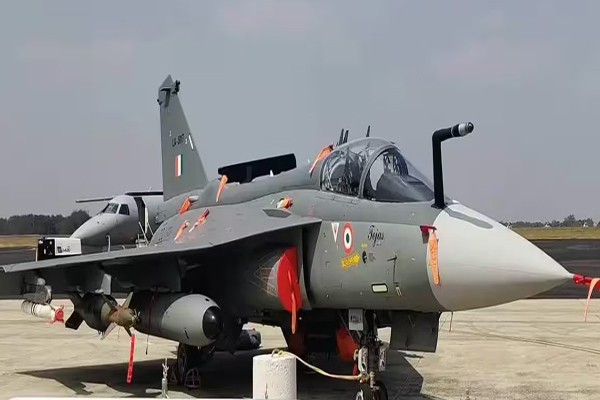The Aerospace and Defence (A&D) market in India is estimated to reach around $70 billion by 2030. The set new benchmark for growth is supposedly because technological-collaboration, emphasis on manufacturing and Government’s strong push to create an Aerospace and Defence (A&D) ecosystem in India. In recent times, commercial aviation industry has seen a boom with growing air traffic and more passengers choosing air travel. This increase in passenger traffic in India has been highly rapid in the past five years at over 15 percent per year and this has increased from around 70 to 200 million passengers in the past 10 years in domestic and international air travel. This growth trend is expected to continue strongly in future years as the economy develops and fuels the demand from a growing middle class for air travel for tourism, business, other visits etc. Alongside, there is potential growth expected for smaller aircraft, business jets, helicopters etc. for regional connectivity and faster movement.
Manufacturing Aerospace and Defence (A&D) Components
Today India is gradually becoming a sweet-spot for manufacturing. These growing manufacturing interests are fuelled by global OEMs. And their suppliers are no far as India is becoming a vital junction for global supply chain for aerospace components and parts. The reason behind the growing hub for these supply chain is the existing technical know-how, talent pool and low-cost yet best quality product creation. Also the geographical positioning of India enables global OEMs and its suppliers to easily manufacture indigenously and thereafter export. Worth mentioning regardless of technological sectors, India already has young-ready workforce to drive the growth in the Aerospace and Defence (A&D) market in India. The revolution what India brought in the Automobile Industry can well be replicated in aerospace and related components and services. Many private companies have made rapid strides in developing India as a preferred destination for aero structures, components, sub-assemblies and complex system assemblies. Leading global OEMs have established JVs in India for the manufacturing of aerospace related parts and assemblies which find their way into many commercial and defence aircraft and helicopters.
India’s Growing Budget in the Defence sector
India has allocated $72.6bn to the Defence Research Development Organisation (DRDO), a body which oversees the research and development process in the country’s defence sector. Known as an area India invests significantly in, its Union Budget for the Financial Year 2023-24 is a 13.1% increase in defence research & development (R&D) expenditure. The increase in defence spending will see the South Asian country invest in more military equipment and other capabilities to become self-reliant in critical defense technologies and systems. Russia is the largest exporter of arms to India. India is investing money to try and accelerate the development of technology, such as India’s first indigenous aircraft carrier INS Vikrant (IAC-1). The cause of this expenditure is driven by the need to replace the country’s ageing military hardware to ensure adequate protection from potentially hostile actions by the changing global warfare affairs.
Research and Development in the Indian A&D Sector and Budget 2023
From 2022-2027, the level of funding available to India’s Armed Forces will increase to $83.3bn in 2027, showing the country’s desire to fortify its armed forces and satisfy its security needs. The Defence Research & Development Organisation is leading India’s indigenous modernisation programmes.
During this year’s India’s Union Budget 2023, the allocation for defence has been increased by 12.5 percent over last year to Rs 5.94 lakh crore for 2023-24 from Rs 5.25 lakh crore. Of the total budget for defence, the government has allocated Rs 1.62 lakh crore as capital outlay meant for the purchase of new military equipment, which is an increase of 7 percent over the current fiscal’s capital budget of Rs 1.52 lakh crore. However, with the average rate of inflation remaining around 6 percent throughout the current fiscal year, the capital budget remains unchanged in absolute terms. Many mega military projects are underway, including the procuring of fifth-generation Advanced Medium Combat Aircraft (AMCA), Twin Engine Deck-Based Fighter (TEDBF), Tejas Mk2 and a critical design and development programme for an aero engine. The Indian Navy’s acquisition plans include 27 fighter jets for its new aircraft carrier, the indigenously developed INS Vikrant.
The modernisation drive for the Indian army has been pending for two decades. There is an urgent need for light tanks for deployment in high-altitude mountainous ranges along the line of actual control (LAC) in Eastern Ladakh, as well as the replacement of INSAS rifles that have been in service for over two decades.
In 2021-2022, the government allocated Rs 5.25 lakh crore to the ministry of defence (MoD). Last year, the budget allocated to the defence sector was the highest among all the ministries in the federal government. As the capital defence budget also caters to the sustenance of weapon systems, a significant part – unspecified, however—will go out into platforms including ships, aircraft and their logistics, boosting fleet serviceability. What is then left, will be utilized for the emergency procurement of ammunition and spares; procuring and hiring of niche capabilities to mitigate capability gaps wherever required; progress stocking of military reserves, and strengthening forward defences, amongst others. However, for the Indian Air Force, there is an increase of about Rs 9,599 crore (~$1.17 Billion) in capital outlay under ‘Other equipment – Air Force’ as compared to the revised estimates of the financial year 2022-23.
The Ministry of Defense (MoD) has announced to invest INR 5,935.37 Bn for defense spending in FY 2024, up from INR 5,251.66 Bn in FY 2023, expanding at a compound annual growth rate (CAGR) of 8.33% during the FY2020 – FY2024 period. This includes expenditures for armed forces and civilian salaries, pensions, armed forces’ modernization, production establishments, maintenance, and its research and development organizations. To boost the attempts to achieve sustainability in modernization & infrastructure development of the defense services, there has been an increase in capital allocations by 6.7% from FY 2023. Salary and pension expenditure accounts for the largest share of the defense budget.
Key Market Trends:
As part of the Make in India push, indigenous production in the defense sector is anticipated to become more prominent in the subsequent years. The industry has also been concentrating on projects integrating disruptive technology like artificial intelligence and related applications, such as facial recognition, language translation, remotely operated weapon stations, robotic mine detectors, and intrusion detection systems.
Market Drivers and Challenges
The market is being aggressively penetrated by players from several industries. Firms such as Reliance Industries and Adani Group seize possibilities stemming from the push for indigenization. Private parties are working with the Indian government to expand their operations and take use of the country’s current supply chain patterns to move up the value chain more quickly. Increased production and procurement of defense equipment may increase the armed forces’ reliance on imports. Foreign companies that invest directly in MSMEs face significant risks in India because the OEM ultimately controls quality and consistency. Also, it is not in the best interests of major US-based defense companies to invest in India because producing modern defense and aerospace technologies is an expensive, complicated process that requires significant investment
Job Trends in Indian Aerospace and Defence Sector
The number of active job postings in the Aerospace and Defense sector of India decreased by 5.22% MoM, and increased by 18.65% since January 2023, reaching 2,831 active job postings in April 2023.
A total of 744 new jobs were posted in April 2023, witnessing a decrease of 45.33% as compared to the previous month. On the other hand, 900 jobs were closed in the same month implying that companies took out 24.94% fewer jobs than the month earlier. For the period from January 2023 to April 2023, the number of new jobs posted decreased by 4% and the number of jobs closed increased by 27.3%
In terms of Compound Monthly Growth Rate (CMGR) between January 2023 and April 2023, the number of new jobs posted observed a negative growth rate of 1.35%, the number of active job postings observed a growth rate of 5.87% and the number of jobs closed observed a growth rate of 8.38%. Between January 2023 and April 2023, the average number of jobs posted stood at 932, number of jobs closed stood at 804 and number of active jobs stood at 2,757.















